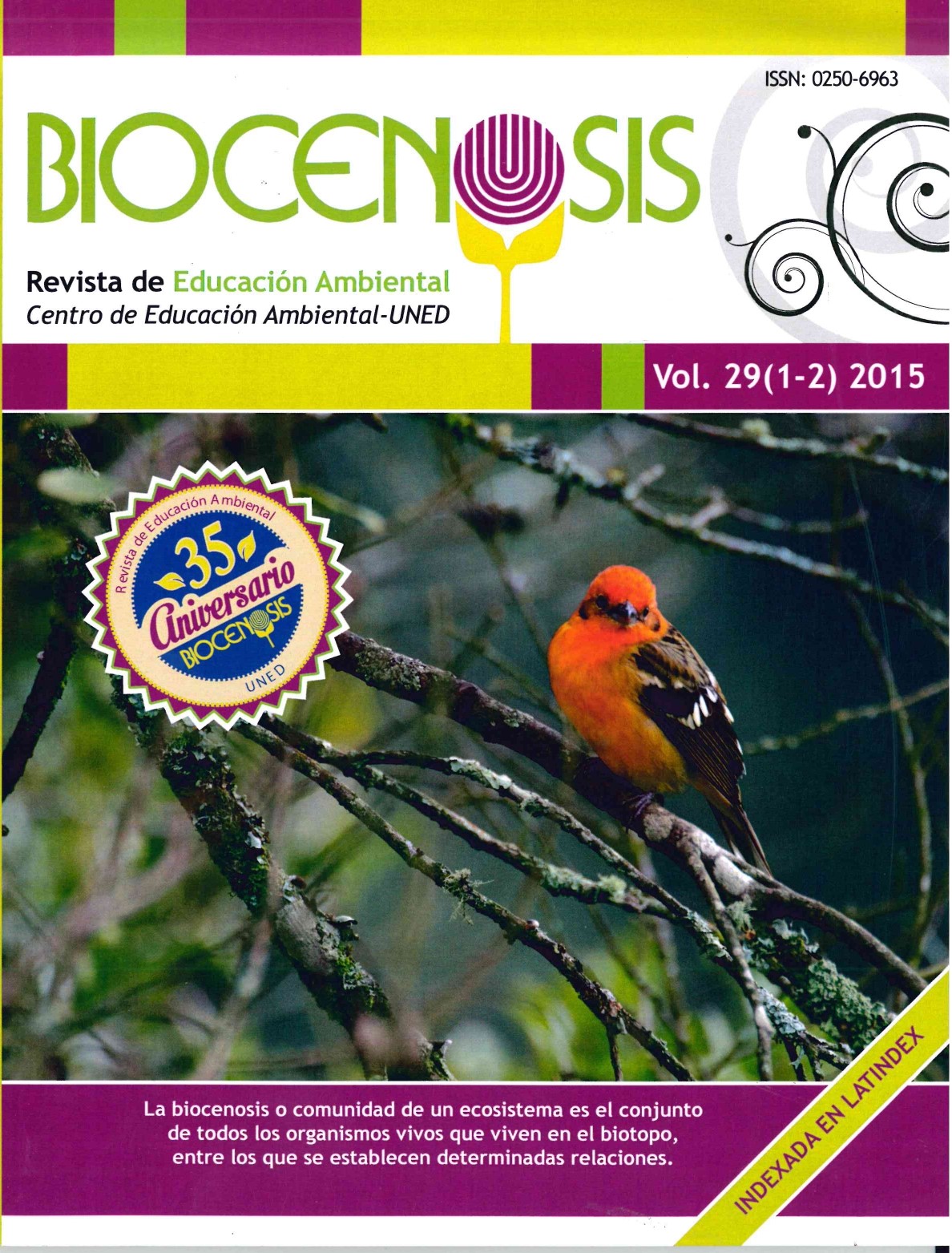ANÁLISIS DEL CONOCIMIENTO DE BIODIVERSIDAD EN ESTUDIANTES DE PRIMARIA Y SECUNDARIA EN DOCE COMUNIDADES RURALES DE COSTA RICA
Palabras clave:
Taxonomía, Plantas, InsectosResumen
En el presente estudio se analiza el conocimiento en biodiversidad que muestran los(as) estudiantes de primaria y secundaria en doce comunidades rurales del país. En total participaron 524 niños(as) y jóvenes de tercero, quinto, sétimo y noveno nivel de la educación formal. La investigación no experimental transeccional se basó en el conocimiento de las especies tanto de animales como de plantas que mencionan con mayor frecuencia los(as) estudiantes. Los animales vertebrados y las plantas exóticas son citados por más estudiantes. El conocimiento taxonómico es más general (taxones grupales como género y familia) en animales con relación a las plantas, en las que conocen más especies y las mujeres conocían más de plantas exóticas que los hombres. Los insectos son el grupo más abundante y biodiverso que existe y las plantas costarricenses son el grupo mejor conocido en el país. Lo anterior sugiere que debe fortalecerse la enseñanza y el aprendizaje de estos temas en los niveles investigados como parte de la Estrategia Nacional de Conservación; enfocada en usos de la biodiversidad a partir del conocimiento local. Para ello es importante que se cuente con participación local de estudiantes, considerando diferencias en los intereses y necesidades de acuerdo con el género.
Citas
Aguilar, L. (2005). ¿Por qué las mujeres están ausentes en el manejo y conservación de la biodiversidad? Archivo ECODES. Recuperado en <http://www.ecodes.org/archivo/proyectos/archivo-ecodes/pages/especial/mujeres_ma/lorena_aguilar.html>
Ceballos, G., García, A. & Ehrlich, P. R. (2010). The sixth extinction crisis: loss of animal populations and species. Journal of Cosmology 8: 1821-1831.
Convenio sobre Diversidad Biológica (CDB). (2012). Guías breves de las Metas de Aichi para la Diversidad Biológica. Recuperado de <http://www.cbd.int/nbsap/training/quick-guides/>
Evaluación de los Ecosistemas del Milenio. (2005). Ecosistemas y bienestar humano: oportunidades y desafíos para los negocios y la industria. Recuperado de www.unep.org/maweb/documents/document.754.aspx.pdf
García, R. (2002). Biología de la conservación. Santo Domingo de Heredia, Costa Rica, Instituto Nacional de Biodiversidad. 166 p.
Hindson J. (2010). Why Bother with Biodiversity? In Ulbrich K., Settele J., Benedict F.F. (Eds.) 2010. Biodiversity in Education for Sustainable Development – Reflection on School-Research Cooperation. Sofía:Pentsoft Publishers. p. 39-43.
Holl, K. D.; Daily, G. C. & Ehrlich, P. R. (1995). Knowledge and perceptions in Costa Rica regarding environment, population, and biodiversity issues. Conservation Biology 9 (6): 1548-1558.
Lude, A. (2010). The Spirit of Teaching ESD- Biodiversity in Educational Projects. In Ulbrich K., Settele J., Benedict F.F. (Eds.) 2010 Biodiversity in Education for Sustainable Development – Reflection on School-Research Cooperation. Sofía: Pentsoft Publishers p. 17 – 29.
Obando, V. (2002). Biodiversidad en Costa Rica: Estado del conocimiento y gestión. Santo Domingo de Heredia, Costa Rica, Instituto Nacional de Biodiversidad. 81 p.
Sampieri, R. H., Fernández, C. y P. Baptista. (2006). Metodología de la Investigación. 4ta ed. México D.F.: Mc-Graw-Hill Interamericana. 850 p.
Sistema Nacional de Áreas de Conservación (SINAC). (2009). IV Informe de País al Convenio sobre la Diversidad Biológica. Recuperado de: <http://www.inbio.ac.cr/estrategia/Informe4/IV%20INFORME%20DE%20PAIS%20COSTA%20RICA.pdf>
Smith, R. L. y Smith, T. M. (2001). Ecología. 4ta edición. Madrid: Pearson Educación. 664 p.
Unimer. (2002). Estudio Nacional sobre valores ambientales de las y los costarricenses. Recuperado de <http://www.unimercentroamerica.com/biblioteca_virtual/Estudio_de_Valores_Ambientales_en_Costa%20Rica.pdf>
